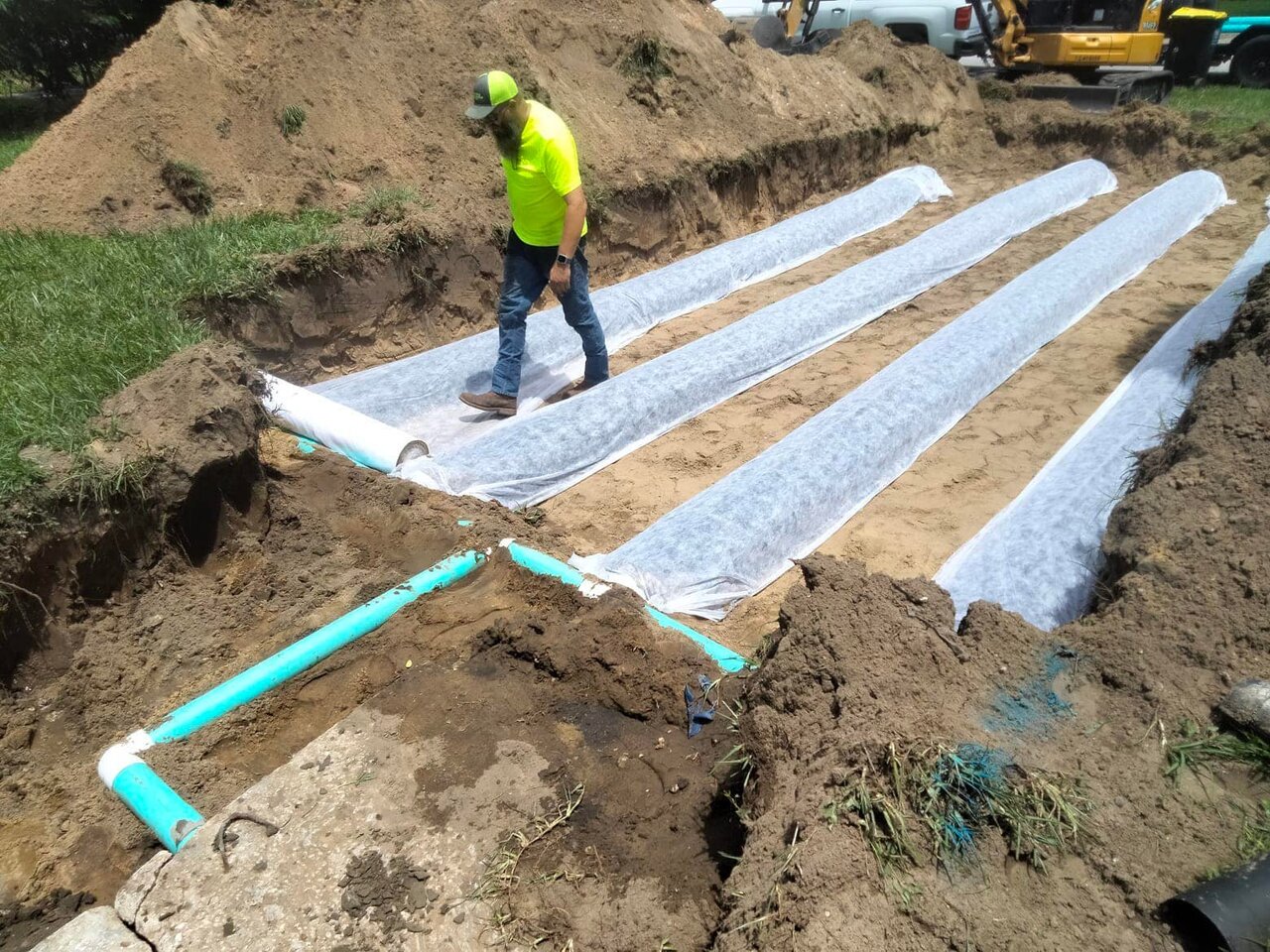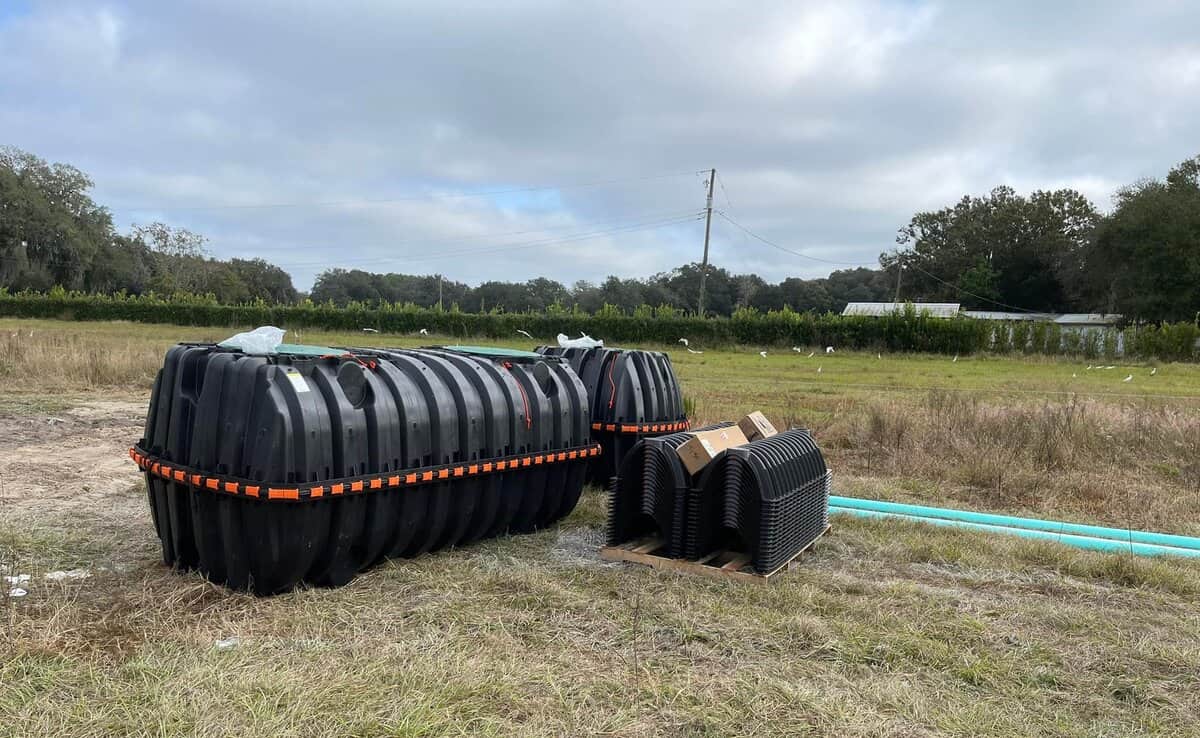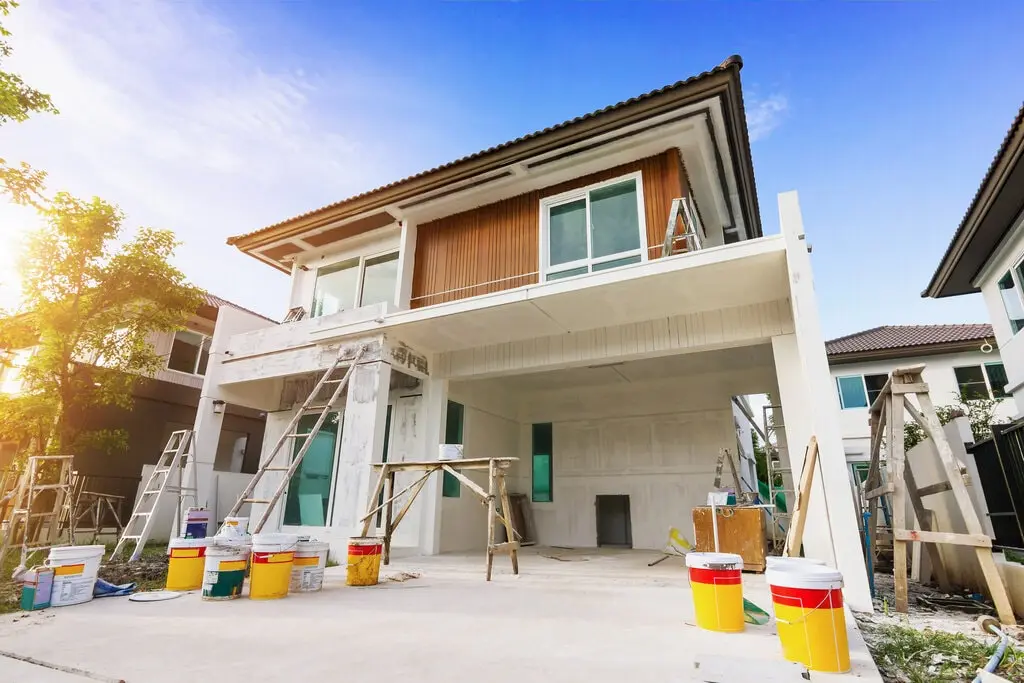There are about 25 million homes in the United States that rely on septic systems for wastewater treatment. If you are one of those homeowners, it is important to know how your septic system works – and what to do if something goes wrong.
One of the most important components of a septic system is the drainfield. So what is a drainfield, and what happens if there are problems with it?
What Is a Drainfield?
Your septic system is designed to meet the needs of your home’s occupants and expected usage. A customized septic tank drain field layout was created prior to installation based on the size of your home, the number of bedrooms, and the expected water consumption.
Another important consideration in the design of a septic system is the ability of soil near the home to absorb and process wastewater. This is where the septic drainfield (also known as a leachfield or septic field) comes in. It is the final stop in treating wastewater from your home before it is discharged back into the environment.
In most septic systems, wastewater from your home flows into the septic tank, where the solids and oils separate from the liquid. This liquid, called effluent, then flows out to the drainfield, which consists of a series of perforated pipes. As the wastewater seeps from the pipes, it travels through the soil of the drainfield, where any remaining contaminants get filtered out. This makes the wastewater safe to be returned to the environment.
Types of Drainfields
There are two main types of residential septic drain fields- a conventional drainfield and an advanced treatment drainfield.
Conventional Drainfields
A conventional drainfield is the most common type. It is made up of a series of trenches or pipes that are filled with gravel and soil. The wastewater flows through the gravel and out into the soil, which completes the filtration process.
Leaching chamber drainfields function like conventional systems, but use a plastic, dome-shaped chamber to hold the wastewater until it returns to the soil. The infiltrator drain field is the most common type.
Advanced Treatment Drainfields
An advanced treatment drainfield is a newer type of drainfield that uses special filters to remove harmful bacteria and nutrients from the wastewater. They require very little space to install, making them suitable for smaller sites.
In comparison to conventional septic tank systems, aerobic treatment methods create high-quality secondary sewage that may be purified and utilized for surface irrigation. This increases the range of options for locating the drainfield while also significantly reducing the required size of the leach site.
The anaerobic treatment system or aerobic treatment system works similarly to a municipal wastewater treatment plant. It injects oxygen (O2) into the processing tank, which boosts the natural bacterial activity in the system. This ensures that nutrients are further broken down in sewage. Some aerobic systems may include a pre-treatment tank as well as a final treatment tank with disinfection to lower pathogen levels.
An aerobic leach and drain field is an ideal solution for homes that are difficult to access because of bad soil conditions, narrow lots, or for homes that are near surface water since they are susceptible to nutrient pollution from sewage.
What Can Happen if There are Problems with My Drainfield?
If there are problems with your drainfield, it can mean that the wastewater is not being filtered properly. Some common signs of drainfield problems that homeowners experience include:
- Soggy or wet areas in the lawn, or lush plant growth in the area of the drainfield.
- Sewage backups or slow-draining toilets, sinks, and tubs.
- Strong odors that might suggest the wastewater has not been completely decontaminated before exiting the drainfield.
If you experience any of these problems, they should be addressed immediately, since drainfield issues can result in sewage backing up into your home or in untreated sewage entering the groundwater. This can cause serious health problems and environmental damage.

How Can I Keep My Drainfield Working Properly?
By following a few easy-to-implement guidelines, you can keep your drainfield working properly and avoid costly drainfield repair or, even worse, the cost to replace a septic tank and drainfield.
- Do not park, drive or build structures on top of the drainfield. Doing so can compact the soil, which can limit its ability to effectively process the wastewater.
- Keep trees and shrubs away from the drainfield. Plants with deep roots can infiltrate pipes, causing clogs or leaks.
- Do not overload the septic system with too much wastewater. Your drainfield was designed to process a certain amount of wastewater from your home, and it needs time to do so effectively.
- Be cautious about what gets flushed down drains. Even seemingly harmless substances like fats, oils, and grease (FOG) can find their way into your drainfield. FOG will not be absorbed into the soil, so it will eventually result in blocking further treatment of the wastewater.
- Regularly inspect the drainfield for leaks or blockages. Most septic professionals will do a drainfield inspection as part of a full septic inspection, or when doing a septic tank pumping or cleaning.
- Have the septic tank pumped out every few years. Every part of your septic system is interconnected, so having a properly functioning septic tank will help ensure that the drainfield also remains effective.
Septic systems are an important part of homeownership, and it is important to know how they work and what to do if something goes wrong. If you are unsure about anything related to your septic system, be sure to consult a professional. For more information, visit the EPA website.
Most Trusted Lakeland Septic Company
If you think there might be a problem with your drainfield, Septic and Drainfield Depot can help. We are a fully insured and licensed septic contractor in the state of Florida, so you can feel confident knowing that our experienced septic professionals will get your job done right.
We offer a full range of residential and commercial septic services, including septic financing.
Contact us today for a free estimate.







